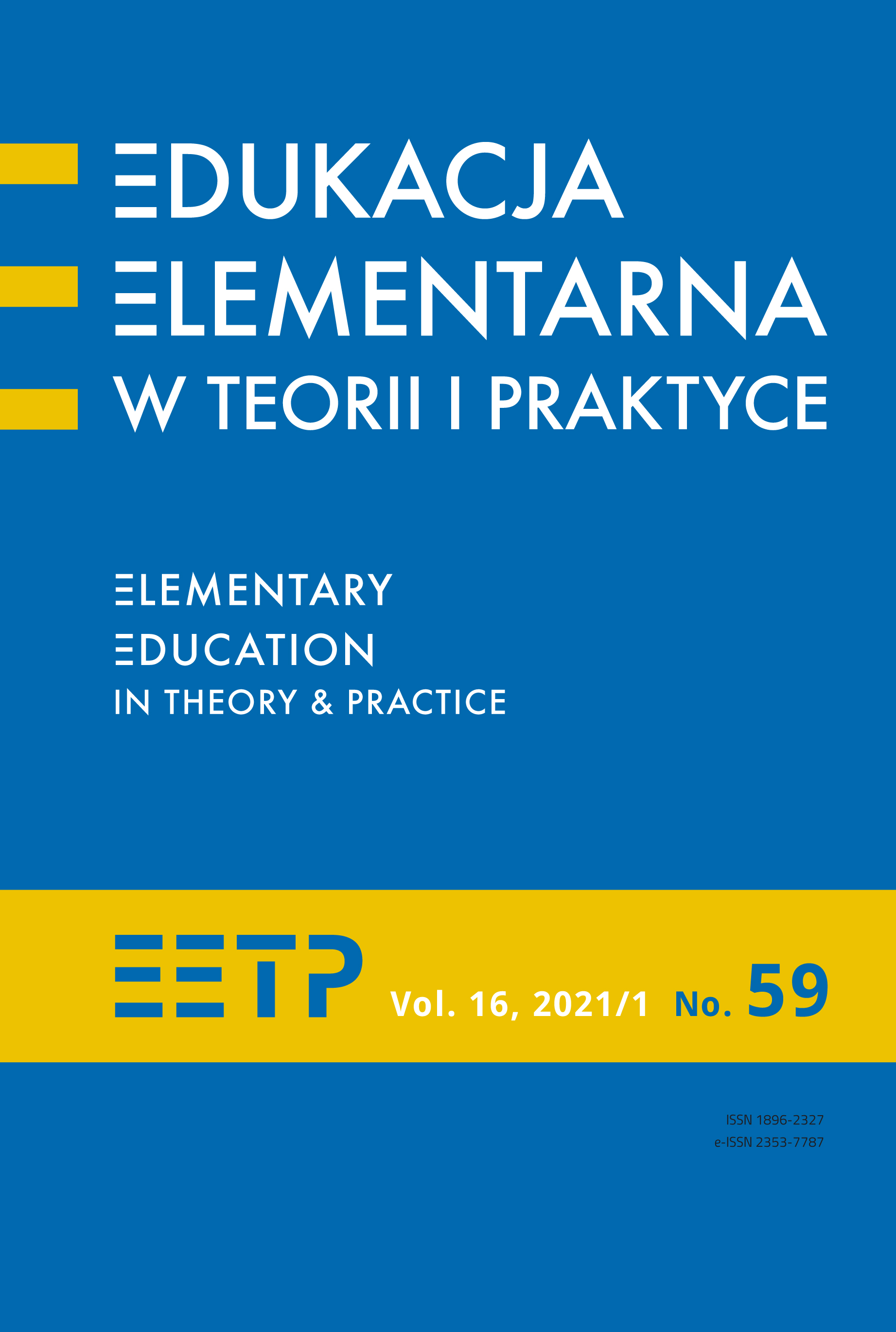Użytkowa funkcja muzyki w gambijskiej szkole podstawowej
Abstrakt
Proces przekazywania wiedzy i umiejętności jest dostosowany do potrzeb użytkowych w danym kraju, do jego poziomu rozwojowego, a także zamknięty w ramach tolerancji, czy też zwyczajów kulturowych oraz religijnych społeczności. Niniejszy artykuł jest zbiorem wniosków dotyczących obecności dziedziny sztuki - muzyki, jako instrumentu edukacyjnego w szkole podstawowej Chernobaba w Manjai Kunda w Gambii, sformułowanych na podstawie jednodniowej obserwacji. Zastosowaną metodą badawczą była obserwacja etnograficzna naturalistyczna, która dostarczyła danych o uczniach i nauczycielach w codziennych sytuacjach, a jej rezultatem są spostrzeżenia i subiektywne wnioski, które mogą być inspiracją dla czytelników do wprowadzenia zmian w podejściu do przedmiotu z zakresu sztuki w szkołach podstawowych. Nauczyciele szkoły Chernobaba modelują zachowania dźwiękowo-ruchowe, a naturalną drogą uczenia się jest imitacja spontanicznych reakcji. Nauczyciele są w klasie głosem dominującym podczas realizacji sekwencji tonalnych i rytmicznych, stanowią wzorzec do naśladowania.
Bibliografia
Aronson E., Wilson, T.D., Akert R.M. (2012). Psychologia społeczna, tłum. Joanna Gilewicz, Poznań: Wydawnictwo Zysk i S-ka.
Bandura A. (1977). Social learning theory, Englewood Cliffs, NJ: Prentice-Hall.
Czerwiński M. (2008). Kompetencja kulturowa a uczestnictwo w kulturze, [w:] Gwóźdź, A., Zeidler-Jniszewska A, Przestrzeni kultury – dyskursy teorii, Warszawa: Narodowe Centrum Kultury.
Dymara B. (red.). (2000). Dziecko w świecie muzyki, Kraków: Oficyna Wydawnicza IMPULS.
Gonzalez-Sanchez VE., Zelechowska A. and Jensenius, A.R. (2018). Correspondences Between Music and Involuntary Human Micromotion During Standstill. Front. Psychol.9:1382. DOI: 10.3389/fpsyg.2018.01382.
Gordon E.E. (1997). Umuzykalnianie niemowląt i małych dzieci, Kraków: Wydawnictwo „Zamiast Korepetycji”.
Gordon E.E. (1999). Sekwencje uczenia się w muzyce. Umiejętności, zawartość i motywy, Bydgoszcz: Wydawnictwo Uczelniane Wyższej Szkoły Pedagogiczne.
Jabłońska B. (2014). Socjologia muzyki, Warszawa: Wydawnictwo Naukowe Scholar.
Kamińska B. (2001). Miejsce muzyki w życiu młodzieży, [w:] M. Manturzewska, M. Chmurzyńska (red.), Psychologiczne podstawy kształcenia muzycznego, Warszawa: AMFC.
Kołodziejski M. (2011). Koncepcja Edwina E. Gordona w powszechnej edukacji muzycznej, Płock: Wydawnictwo PWSZ.
Konarzewski K. (2000). Jak uprawiać badania oświatowe. Metodologia praktyczna, Warszawa: WSiP.
Leszczyński G. (red.) (2009). Sztuka dziecka jako forma komunikacji społecznej, Poznań: Centrum Sztuki Dziecka, Tom. 1.
Marczak M. (2018), Cyberprzestrzeń jako nowy wymiar aktywności człowieka – analiza pojęciowa obszaru, „Przegląd Teleinformatyczny”, 1-2, s. 59-72.
Trzos P.A. (2018). Umiejętności audiacyjne uczniów na etapie edukacji wczesnoszkolnej, Bydgoszcz: Wydawnictwo Uniwersytetu Kazimierza Wielkiego.
Williamson R. A., Jaswal, V. K., Meltzoff A. N. (2010). Learning the rules: Observation and imitation of a sorting strategy by 36-month-old children. “Developmental Psychology”, Vol 46 (1), p. 57-65, DOI: 10.1037/a0017473.
Zwolińska E.A. (2011). Audiacja. Studium teorii uczenia się muzyki Edwina E. Gordona, Bydgoszcz: Wydawnictwo Uniwersytetu Kazimierza Wielkiego.
Copyright (c) 2021 Edukacja Elementarna w Teorii i Praktyce

Utwór dostępny jest na licencji Creative Commons Uznanie autorstwa – Bez utworów zależnych 4.0 Międzynarodowe.
1. Autor zgłaszając swój artykuł oświadcza, że jest Autorem artykułu (zwanego dalej Utworem) i:
- przysługują mu wyłączne i nieograniczone prawa autorskie do Utworu,
- jest uprawniony/a do rozporządzania prawami autorskimi do Utworu.
Oświadcza, że nie narusza praw autorskich osób trzecich i praw prawnych.
Oświadcza, że nie występuje żaden konflikt interesów.
2. Udziela Uniwersytetowi Ignatianum w Krakowie nieodpłatnej, niewyłącznej, nieograniczonej terytorialnie licencji do korzystania z Utworu na następujących polach eksploatacji:
- utrwalania utworu w formie papierowej, a także na nośniku cyfrowym lub magnetycznym;
- zwielokrotnienia utworu dowolną techniką, bez ograniczenia ilości wydań i liczby egzemplarzy;
- rozpowszechniania utworu i jego zwielokrotnionych egzemplarzy na jakimkolwiek nośniku, w tym wprowadzenia do obrotu, sprzedaży, użyczenia, najmu;
- wprowadzenia utworu do pamięci komputera;
- rozpowszechniania utworu w sieciach informatycznych, w tym w sieci Internet;
- publicznego wykonania, wystawienia, wyświetlenia, odtworzenia oraz nadawania i reemitowania, a także publicznego udostępniania utworu w taki sposób, aby każdy mógł mieć do niego dostęp w miejscu i czasie przez siebie wybranym;
- w zakresie praw zależnych do Utworu, obejmujących w szczególności prawo do dokonania koniecznych zmian w Utworze, wynikających z opracowania redakcyjnego i metodycznego, a także do dokonania tłumaczenia Utworu na języki obce.
Udzielenie licencji następuje z chwilą przekazania Utworu na rzecz Uniwersytetowi Ignatianum w Krakowie. Uniwersytet Ignatianum w Krakowie jest uprawniony do udzielania dalszych sublicencji do Utworu, w zakresie udzielonego prawa. Licencja jest ograniczona czasowo i zostaje udzielona na okres 15 lat, licząc od daty jej udzielenia.
Wyraża się zgodę i zachęca autorów do publikacji ich tekstu w Internecie (np. w repozytorium instytucji lub na jej stronie internetowej) przed lub podczas procesu składania tekstu jako, że może to prowadzić do korzystnych wymian oraz wcześniejszego i większego cytowania opublikowanego tekstu (Patrz The Effect of Open Access). Zalecamy wykorzystanie dowolnego portalu stowarzyszeń badawczych z niżej wymienionych:




